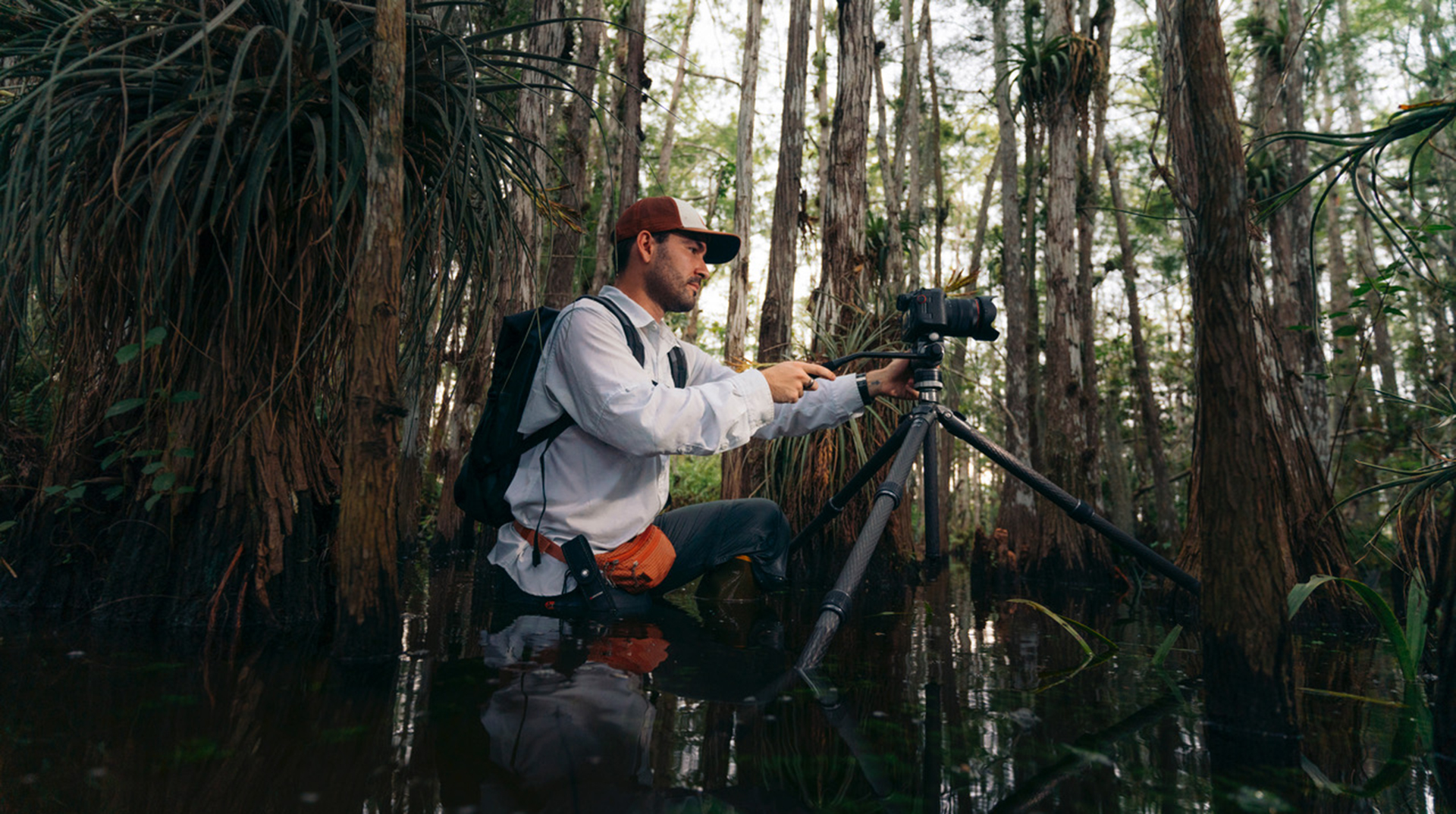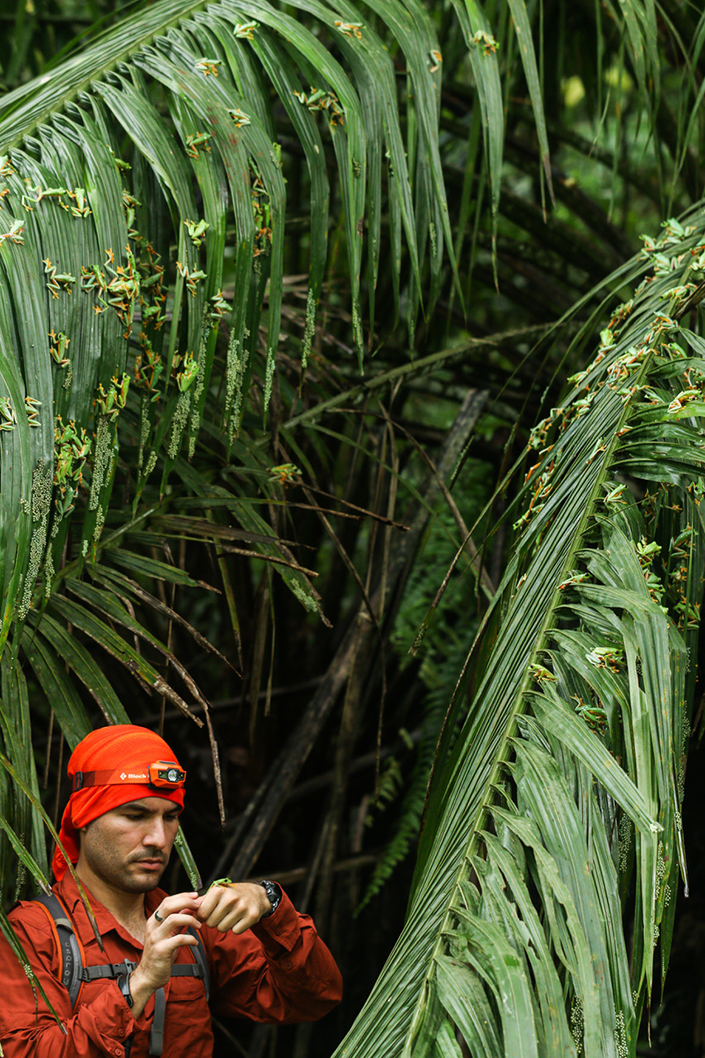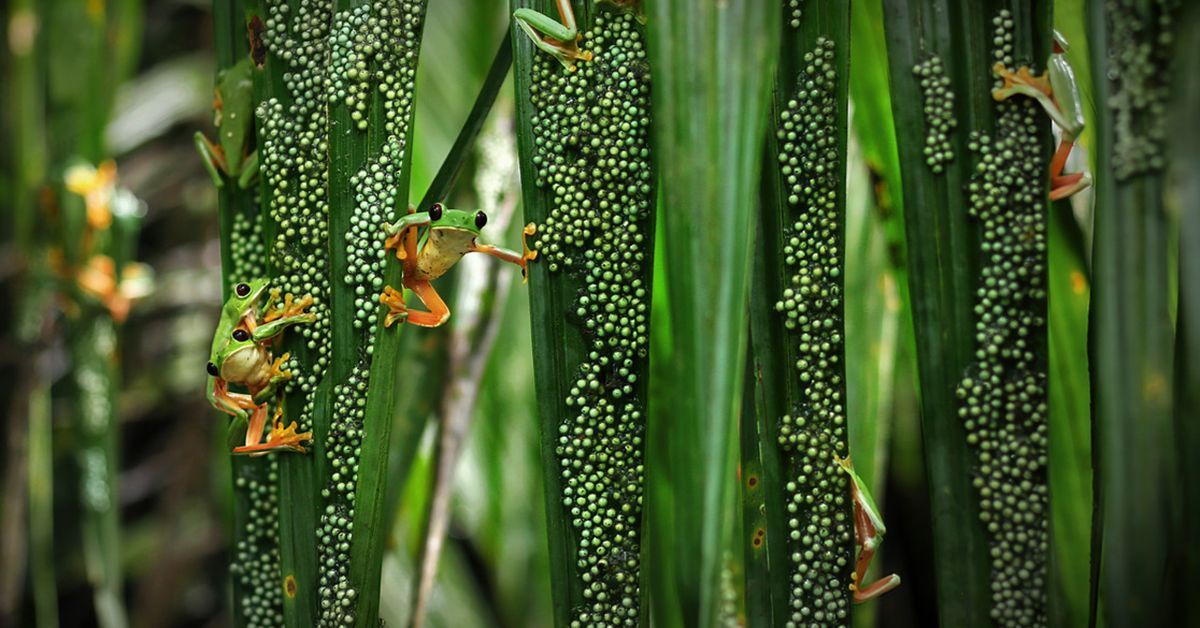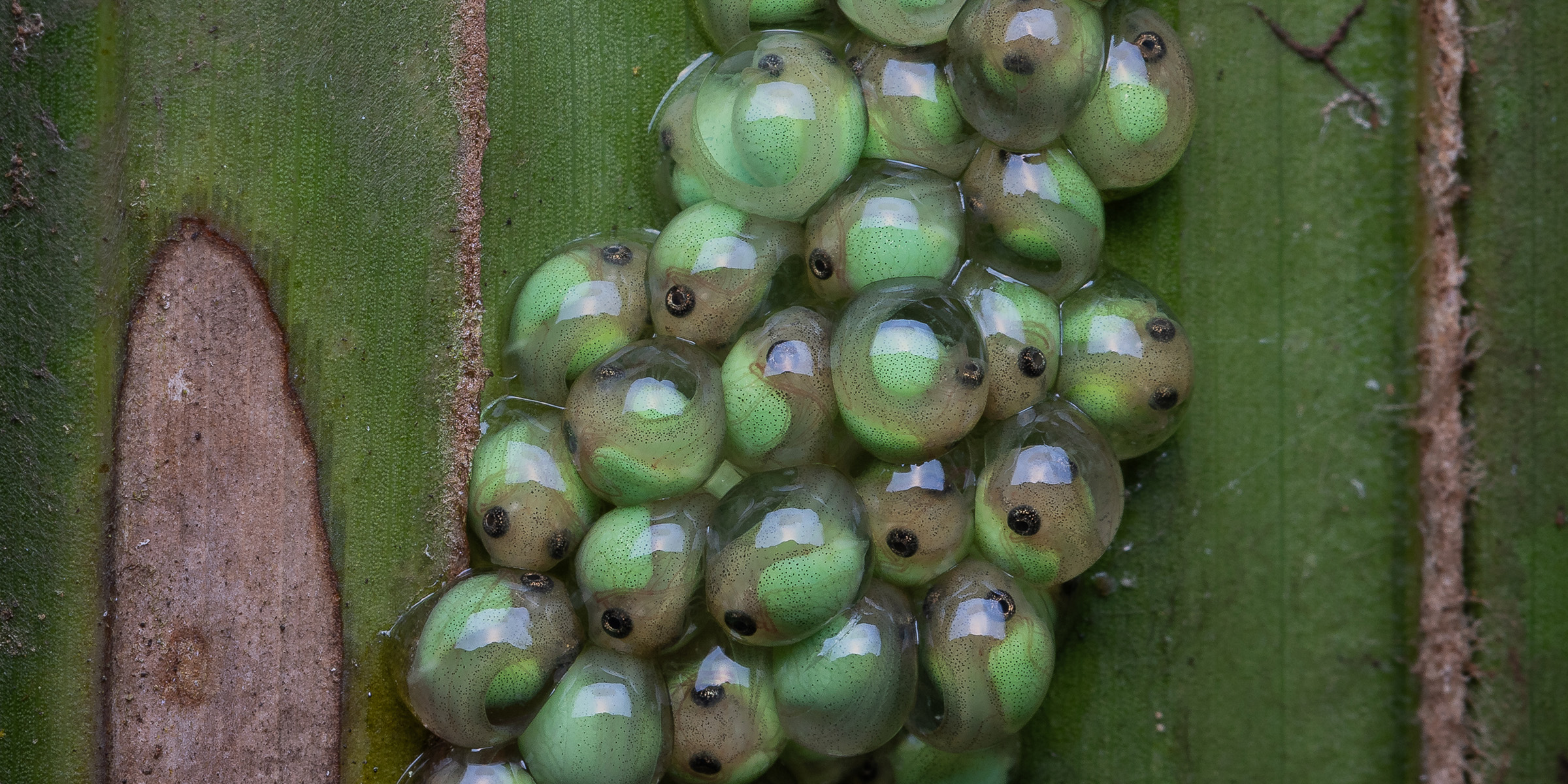Through the Lens of the Natural World
2016 alum explores nature with a passion for wildlife photography and science
Story by:
Published Date
Article Content
UC San Diego alum Brandon Güell’s zeal for wildlife and conservation came at an early age during family trips across Costa Rica. Recently he was recognized in the Natural History Museum in London's Wildlife Photographer of the Year competition for “Treefrog Pool Party,” a stunning photo that showcases his mastery of capturing rare moments in nature. Through his science, demanding field research and inspirational photos, Güell hopes to motivate advocates for conservation and share his passion for the natural world.
Brandon Güell
School of Biological Sciences Alum (bachelor’s degree, ’16)
What do you do?
I am a wildlife ecologist and photographer interested in natural history, ecology and animal behavior. For the past six years I have been studying the reproductive and behavioral ecology of the gliding treefrog (Agalychnis spurrelli) on Costa Rica’s Osa Peninsula for my PhD dissertation research at Boston University. As a graduate student researcher, I used observational studies and experiments in the field to assess explosive breeding and its consequences for critical adult and embryo behaviors in gliding treefrogs. As a wildlife photographer, I use my images to document the biodiversity in our natural world and help communicate my science and conservation work.
Why do you do what you do?
Simply put, I love being surrounded by wildlife in wild places, and my research and photography allow me to do just that. My passion for wildlife, conservation and animal behavior began at a very young age and was largely due to traveling throughout Costa Rica with my family as a child. My interest in wildlife photography developed at the start of my PhD, initially from using it as a tool to study animal behavior in the field. Now, I aim to use photography not only to communicate science but also to help inspire a passion for wildlife, wild places and create advocates for conservation.

You were recently honored in the Natural History Museum's Wildlife Photographer of the Year competition (Highly Commended Award in the Behavior: Amphibians and Reptiles category). What's the story behind your award-winning photo?
I took my award-winning photo, entitled “Treefrog Pool Party,” at my study site on Costa Rica’s Osa Peninsula in 2018 during the first explosive breeding event of gliding treefrogs I ever saw. I was so excited, amazed and overwhelmed by the spectacular display of wildlife and animal behavior that I had to try and capture as much of it as I could. That day, I took over 800 photos in less than four hours. My photo shows a male gliding treefrog searching for mates and reproductive opportunities amidst thousands of competitors and potential offspring during a massive explosive breeding event on Costa Rica’s Osa Peninsula. During explosions, females lay hundreds of eggs, often right next to each other, creating huge egg masses on palm fronds that overhang forest pools. Of the hundreds of thousands or even millions of eggs laid, most die from desiccation, predation and fungal infection. Thus, single, unpaired males fight for reproductive opportunities by attempting to dislodge paired males and take their place, or by trying to indirectly fertilize already laid eggs.
Explosive breeding events of gliding treefrogs are hard to predict, uncommon and occur at only a few remote locations. To take this photo, I woke up at 4 a.m. for several days to survey the pond and look for breeding activity. I waded chest-deep through the murky water, a massive pond spanning an area larger than an Olympic-sized swimming pool, with all my camera and research equipment either on my back or in my hands. I fought off mosquitos and fumbled with my gear for over four hours, all while trying to avoid disturbing the two resident caimans that waited to prey on falling frogs from the vegetation above.
My favorite thing about this photo is how the intimate look of the focal male captures the intensity of his situation. Scrambling and partnerless amidst hundreds of thousands of already laid eggs and several competitors, this male’s gaze highlights the urgency of his need to reproduce. Explosive breeding causes mating mayhem since reproduction only takes place during short breeding periods. To me, this image captures the natural beauty surrounding this reproductive chaos, and I hope sharing it will not only help communicate my research but also inspire a passion for wildlife and create advocates for conservation.
Tell us about your passions for photography and science. What has motivated you in these two areas?
After initially learning to use photography as a tool to collect data on animal behavior, I quickly realized its usefulness for broader science and conservation communication. I have learned that photography is a powerful agent that can generate empathy and advocates for wildlife and wild places, often more so than even the clearest scientific publications or compelling data. I also fell in love with the challenge of capturing rare and unique moments in nature and sharing my experiences with the world. The ability to share these snapshots in and over time—whether backed by scientific knowledge or powerful conservation stories—is what motivates me to continue pursing science and photography simultaneously.
What were key takeaways from your education at UC San Diego’s School of Biological Sciences?
Studying Ecology, Behavior and Evolution at UC San Diego as an undergraduate provided me with invaluable research experiences that helped shape my professional and personal interests in ecology. Thanks to mentorship and support from Drs. Jonathan Shurin and Carolyn Kurle, I was able to conduct field research in the high mountains of the Sierra Nevadas and on the Pribilof Islands in Alaska. These experiences helped shape my passion for field biology and motivated me to pursue a career as a wildlife ecologist.
What have you learned since graduating?
I’ve learned that there is so much more to life than what you study in college or what you do professionally afterwards and that the best decisions and moments in life are intentional ones. I’ve learned that taking risks and trying new things leads to self-growth and development, that graduate school is about learning how to learn, that cooking and eating are best done outside alongside good company and even better views, that our world is diverse, complex and worth exploring every inch of and that happiness and success are largely subjective.
What’s next on your horizon?
I have dedicated the past decade of my life to working with wildlife in wild places, and I have no intention of stopping now! As a new-ish resident of South Florida, I am particularly interested in working in the larger Everglades ecosystem and am excited to start a new opportunity at the intersection of applied field ecology, animal behavior, science communication and conservation as a postdoctoral scholar at Florida International University in Dr. Nathan Dorn’s Aquatic Ecology lab associated with the Institute of Environment. I am also excited to continue growing my photography as I explore our natural world through my research.

Share This:
You May Also Like
Stay in the Know
Keep up with all the latest from UC San Diego. Subscribe to the newsletter today.














